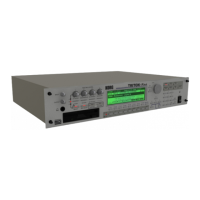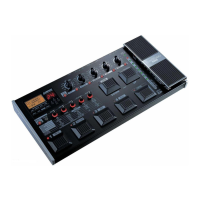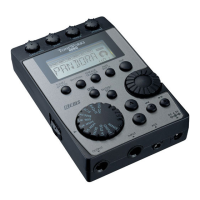5–1: Track Edit
101
Sequencer P5
5–1: Track Edit
Here you can make settings for the currently selected track, edit previously recorded musical data,
and perform step recording (non-realtime recording).
For the procedure of realtime recording, refer to Basic Guide page 43, “About recording”.
To edit musical data or perform step recording, first select a track and an area in the tab page dis-
play. Then use the page menu command.
For details on settings for the currently selected track, refer to “1–1: Track Play/Rec.”
5–1f: Track [T1…T16, MTR]
Selects the track whose musical data you wish to record or edit (or which will be the copy destina-
tion).
If you wish to edit all tracks, there is no need to specify them here. (Check the All Tracks checkbox
in the various dialog boxes to select all tracks.)
If you select MTR (Master Track), you can edit tempo and time signature on the master track.
5–1g: Start Measure/End Measure
Specify the range of measures to be recorded or edited (or which will be the copy destination).
Start Measure [1…999]
Specifies the first measure. If you stop song playback while this tab page is displayed, the measure
at which you stopped will be selected as the Start Measure.
End Measure [1…999]
Specifies the last measure.
▼ Page Menu Command
5–1A: Memory Status
This command displays the remaining amount of sequencer memory.
5–1B: Step Recording
This is where you perform non-realtime recording.
Use the keyboard to specify note pitches, and use the Rest button, Tie button, and Step Back but-
ton to specify the timings and velocities of each note. Step recording allows you to input songs
that would be difficult to record in realtime.
Step recording allows you to enter note data. To enter other types of data, for example continuous
data such as pitch bend, use “5–1L: Create Control Data.” To enter individual data events such as
program changes, use “5–1C: Event Edit.”
5–1f
Track1
Master Track
Start Measure
End Measure
Page Menu
5–1A
5–1B
5–1C
5–1D
5–1E
5–1F
5–1G
5–1H
5–1I
5–1J
5–1K
5–1L
5–1M
5–1N
5–1O
5–1P
Playback data is
displayed
(selected track in
inverse video)
Refer to “1–1:
Track Play/Rec”
: playback data exists : no playback data : pattern in use
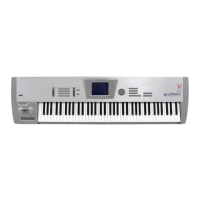
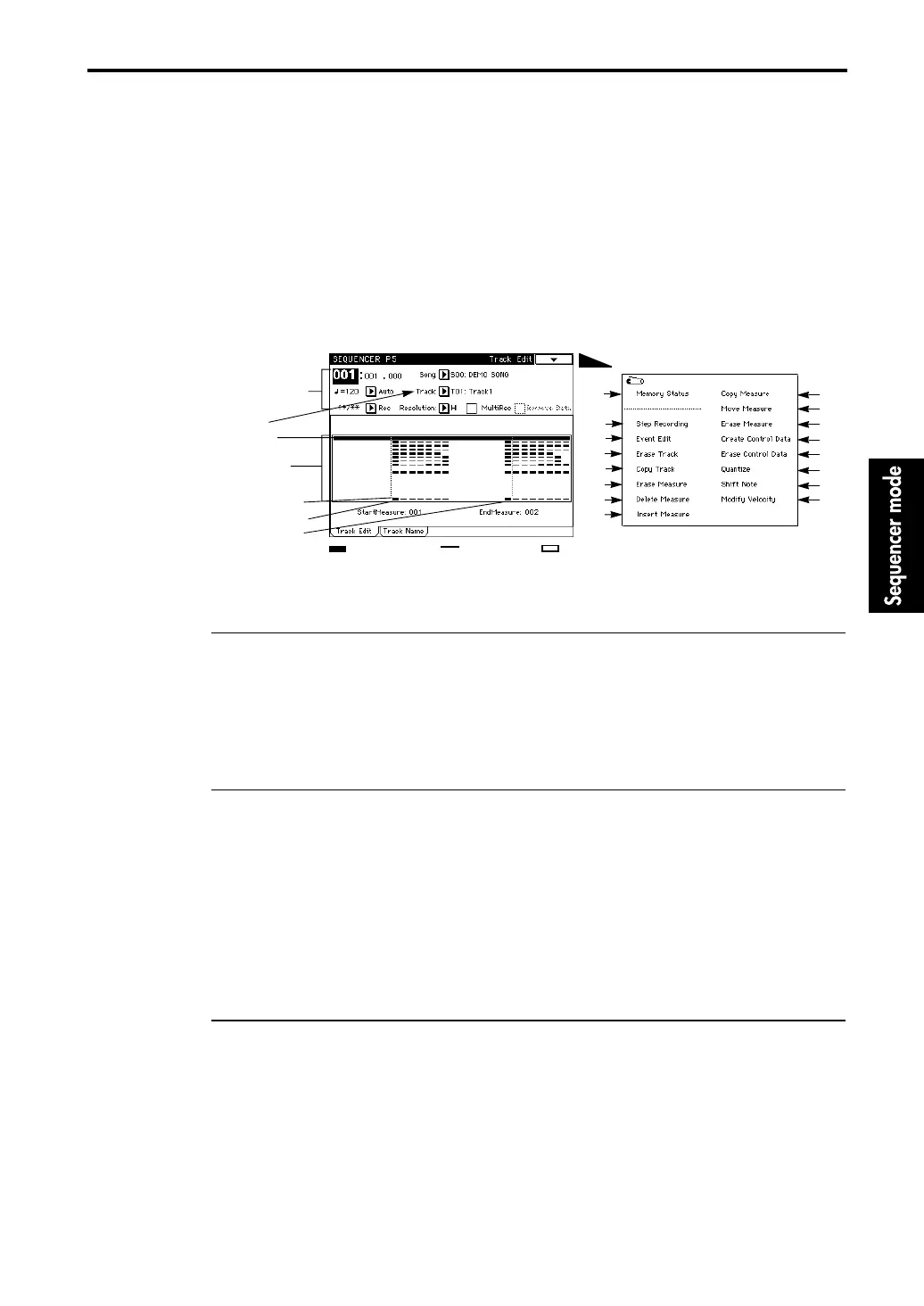